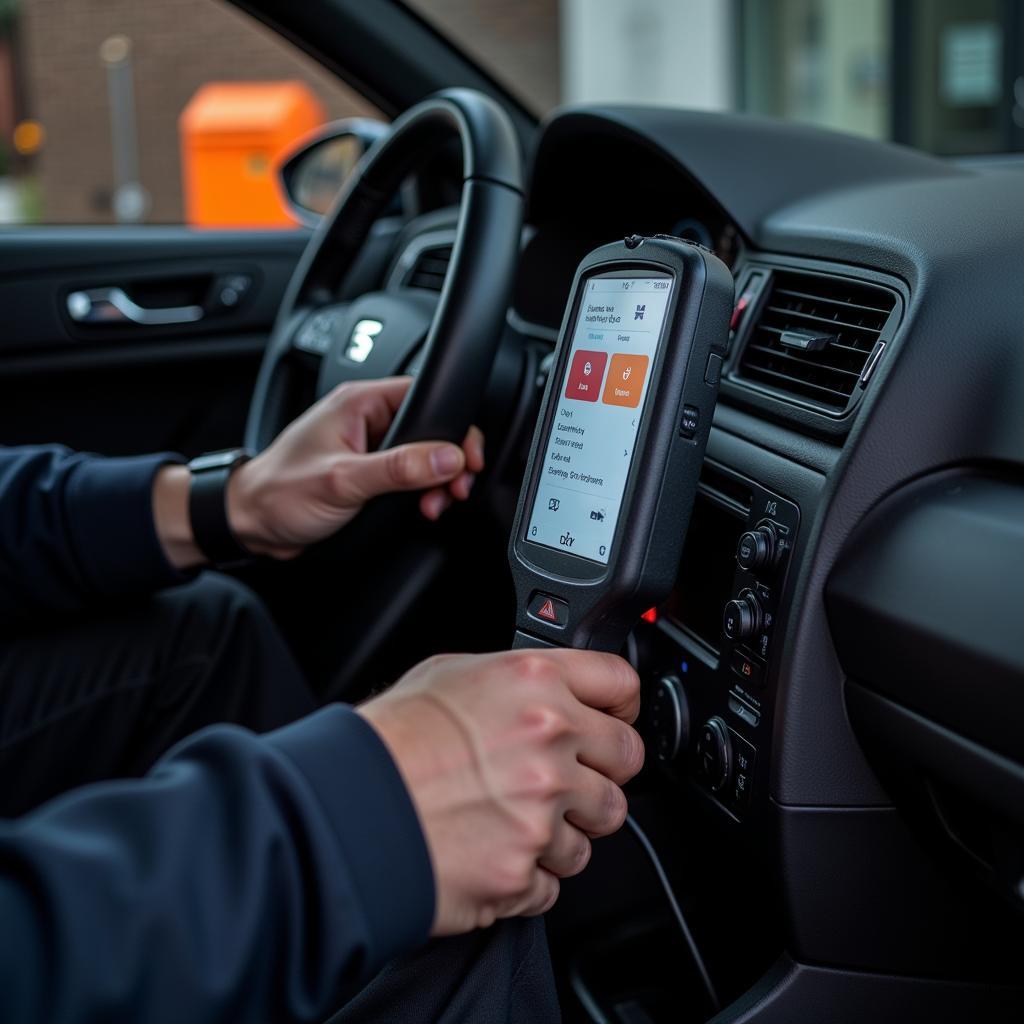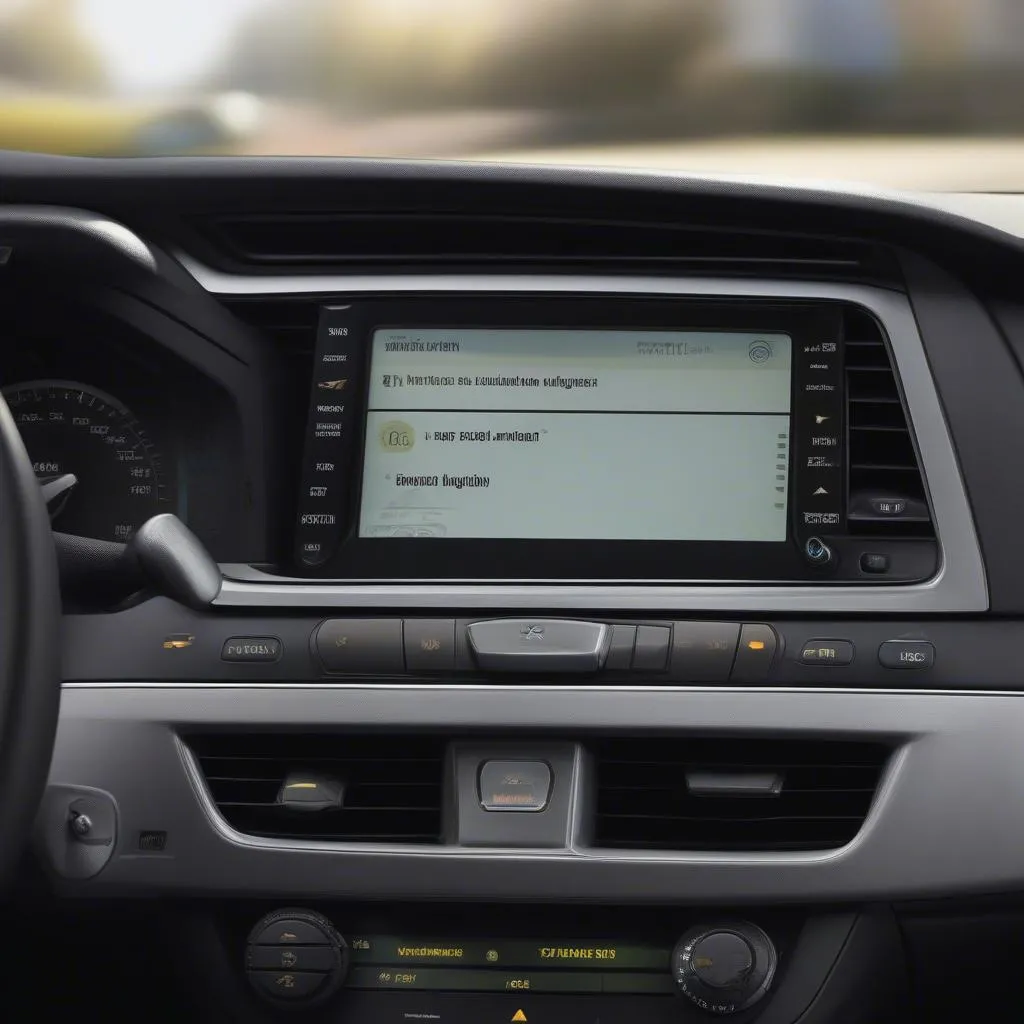The Seat Leon is known for its sporty handling and stylish design. However, like any vehicle, it can experience issues over time. Understanding your Seat Leon’s warning signs is crucial for addressing potential problems promptly and preventing costly repairs down the line. This comprehensive guide will cover common Seat Leon warning signs, their potential causes, and what steps you can take to remedy the situation.
Decoding Your Seat Leon’s Dashboard: Understanding Warning Light Categories
Your Seat Leon’s dashboard is equipped with various warning lights, each signaling a specific system status. These lights are generally categorized by urgency, indicated by their color:
- Red Warning Lights: These signify a serious issue requiring immediate attention. Continuing to drive could lead to severe damage or compromise safety.
- Yellow/Amber Warning Lights: These indicate a less critical issue that requires attention soon. Ignoring them might lead to further damage or costly repairs later.
- Green/Blue Warning Lights: These usually indicate a system is active and functioning correctly, such as headlights or turn signals.
Common Seat Leon Warning Signs and Troubleshooting Tips
Here are some frequently encountered Seat Leon warning signs and potential solutions:
Engine Management Light
- Appearance: Yellow/Amber engine symbol
- Possible Causes: A range of issues, from minor sensor malfunctions to serious engine problems.
- Action: Use a diagnostic tool to read the error code for accurate diagnosis. Address the issue promptly to avoid potential engine damage.
Tyre Pressure Warning Light
- Appearance: Yellow/Amber exclamation mark within a tire tread symbol
- Possible Causes: Underinflated or overinflated tires, a puncture, or a faulty TPMS sensor.
- Action: Check tire pressure, inspect for punctures, and consider visiting a tire shop if the problem persists. You can find more information about the Seat Leon FR tyre pressure warning light.
Coolant Warning Light
- Appearance: Red or yellow/amber thermometer symbol
- Possible Causes: Low coolant level, a leak in the cooling system, a faulty thermostat, or a problem with the water pump.
- Action: If the engine is overheating, stop immediately. Check the coolant level when safe and address any leaks or component failures. For more guidance on this, check out this informative article on the Seat Leon coolant warning light.
Battery Warning Light
- Appearance: Red battery symbol
- Possible Causes: Failing alternator, loose or corroded battery terminals, a dying battery, or an electrical drain.
- Action: Have the battery and charging system inspected by a mechanic to determine the root cause.
Airbag Warning Light
- Appearance: Red airbag symbol (often a seated figure with an airbag deployed)
- Possible Causes: Faulty airbag sensor, deployed airbag, wiring issues, or a problem with the airbag control module.
- Action: Do not attempt to fix this yourself. Consult a qualified mechanic immediately as airbags are safety-critical. You can find more information about the Seat Leon MK2 airbag warning light online.
 Mechanic Inspecting Seat Leon Warning Light
Mechanic Inspecting Seat Leon Warning Light
Beyond Warning Lights: Other Signs Your Seat Leon Needs Attention
While warning lights provide visual cues, your Seat Leon might exhibit other signs of trouble, such as:
- Unusual Noises: Grinding, squealing, knocking, or clicking sounds coming from the engine, brakes, suspension, or other areas can indicate various issues.
- Fluid Leaks: Puddles of fluid under your car, especially if colored or oily, should be investigated.
- Performance Issues: Difficulty starting, rough idling, hesitation during acceleration, decreased fuel efficiency, or pulling to one side while driving can all indicate underlying problems.
- Burning Smells: Unusual odors coming from the engine bay, exhaust, or brakes should be addressed immediately.
Preventative Maintenance: Keeping Your Seat Leon Running Smoothly
Regular maintenance is key to preventing major issues and extending your Seat Leon’s lifespan. Follow the manufacturer’s recommended maintenance schedule, which typically includes:
- Regular Oil Changes: Essential for engine lubrication and performance.
- Fluid Checks and Top-ups: Monitor and replenish coolant, brake fluid, power steering fluid, and windshield washer fluid as needed.
- Tire Rotations and Pressure Checks: Ensure even tire wear and optimal fuel efficiency.
- Brake Inspections: Check brake pads and rotors for wear and tear.
- Battery Maintenance: Clean battery terminals and check charge periodically.
- Air Filter Replacement: Ensure optimal airflow to the engine.
The Importance of Prompt Action and Professional Diagnosis
“Ignoring warning signs is like ignoring a fever,” says John Miller, a seasoned automotive engineer with over 20 years of experience. “It might seem minor initially, but it can escalate quickly and lead to much bigger problems and expensive repairs down the line.”
When your Seat Leon displays a warning light or exhibits unusual behavior, timely action is crucial. While some issues might be minor, others can worsen rapidly and lead to costly repairs or even safety hazards if ignored.
Don’t hesitate to consult a qualified mechanic or use a reliable diagnostic tool to pinpoint the problem accurately. Remember, preventative maintenance is always better – and cheaper – than reactive repairs.
FAQs: Common Questions About Seat Leon Warning Signs
Q: Can I continue driving with a yellow warning light on?
A: While yellow lights indicate less critical issues than red ones, it’s still advisable to address them promptly. Ignoring them could lead to further damage or more expensive repairs later.
Q: What does the TPMS warning light look like, and what should I do if it comes on?
A: The TPMS (Tyre Pressure Monitoring System) light resembles an exclamation mark within a tire tread symbol. If it illuminates, check your tire pressure and inspect for punctures. If the issue persists, visit a tire shop. For detailed information about resetting the warning, check out this guide on Seat Leon tyre pressure warning reset.
Q: My Seat Leon is making a strange noise. Should I be worried?
A: Any unusual noise should be investigated. It could be a sign of a minor issue or a symptom of a more significant problem. It’s best to have a mechanic diagnose the source of the noise.
Q: How often should I service my Seat Leon?
A: Consult your owner’s manual for the manufacturer’s recommended maintenance schedule. Generally, regular servicing is recommended every 6-12 months or a specific mileage interval.
Q: Can I use any diagnostic tool to read my Seat Leon’s error codes?
A: While generic OBD-II scanners can read basic codes, investing in a more advanced scanner specifically designed for Seat vehicles might provide more detailed information and functionality.
Q: Is it essential to use genuine Seat parts for repairs?
A: While genuine parts are often recommended, using high-quality aftermarket parts from reputable manufacturers can be a cost-effective alternative in some cases. Consult with your mechanic to determine the best option for your situation.
Staying Ahead of the Curve: Proactive Car Care for Your Seat Leon
Your Seat Leon is a complex machine, and understanding its warning signs is crucial for ensuring its longevity and your safety.
By familiarizing yourself with the information in this guide and taking a proactive approach to maintenance and repairs, you can keep your Seat Leon running smoothly for miles to come.

